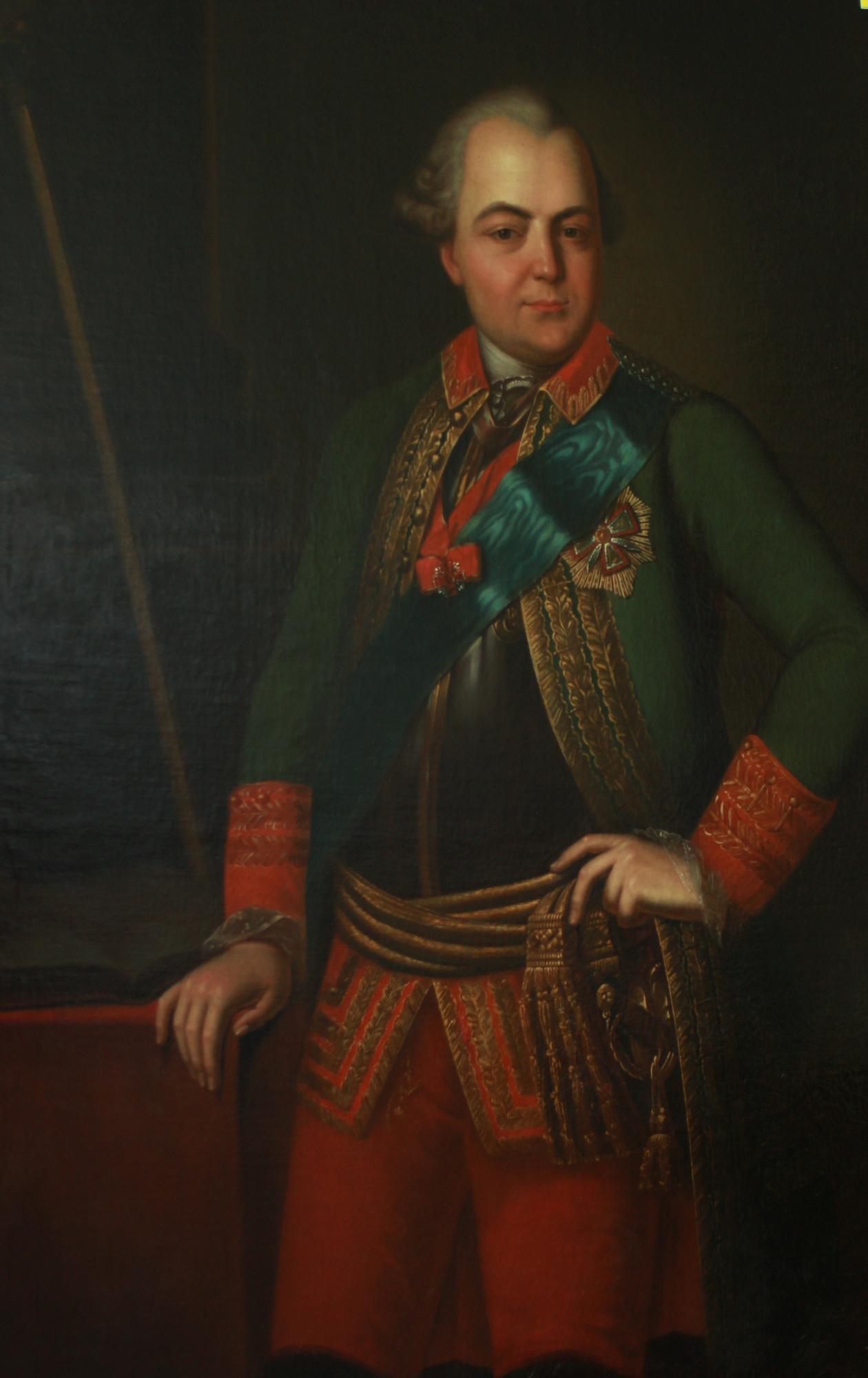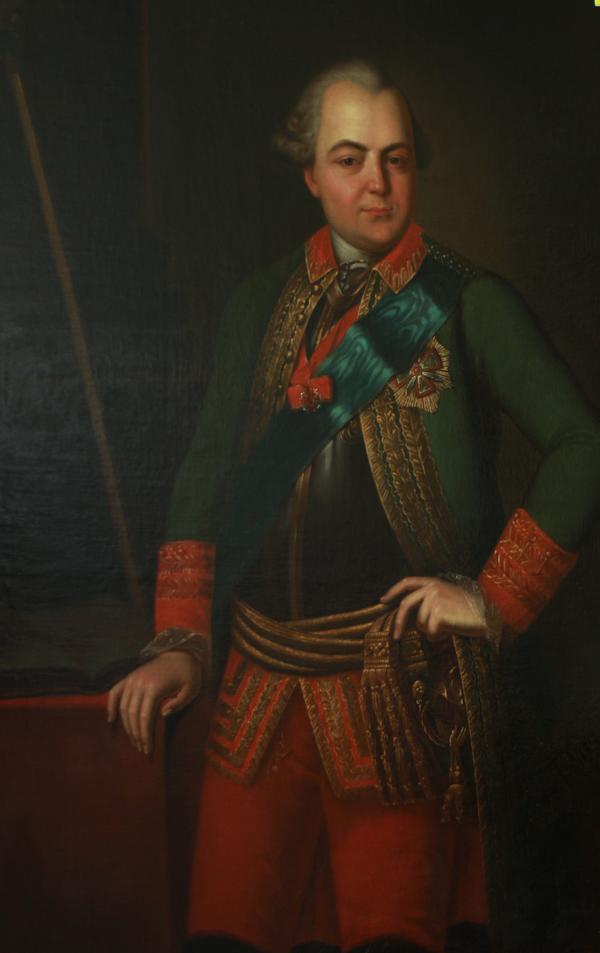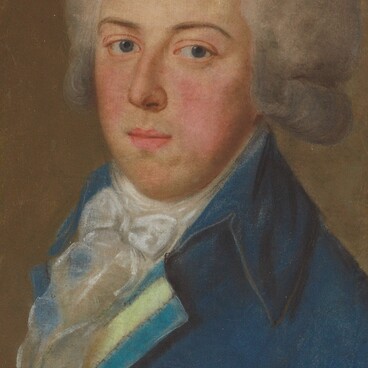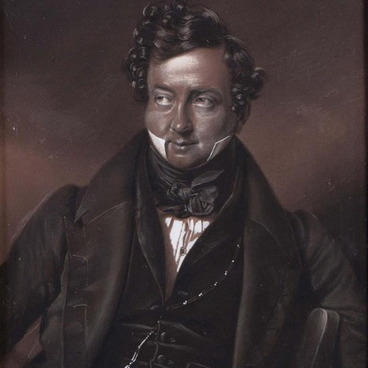‘Он был искусный вождь во брани,
Совета муж, любитель муз,
Отечества подпора тверда,
Блюститель веры, правды друг;
Екатериной чтим за службу,
За здравый ум, за добродетель,
За искренность души его.
Он умер, трон обороняя.
Стой, путник! Стой благоговейно.
Здесь Бибикова прах сокрыт’.
(Г. Р. Державин, ‘Ода на смерть Бибикова’)
The portrait of an unknown artist depicts Alexander Ilyich Bibikov (1729–1774). He was a major military and statesman of the Russian Empire. He was a marshal of the Legislative Commission, a senator, commander-in-chief of the troops during the struggle against the Polish Confederates and during the suppression of the Pugachev uprising.
Researchers say that few figures of Catherine’s times aroused such sympathy for themselves during life and regret after death. But with Bibikov it was exactly like that. Not only compatriots spoke of him in complimentary terms, but also foreigners with whom Alexander Ilyich had a chance to serve.
Alexander Pushkin spoke of Bibikov as a prominent figure of Catherine’s time. The writer even quoted in his ‘History of Pugachev’ lines from Bibikov’s letter to Denis Ivanovich Fonvizin dated January 29, 1774: “After all, Pugachev is not important, but general indignation is important, and Pugachev is a stuffed animal that the Yaik Cossack thieves are playing with”. Alexander Bibikov has always expressed his opinion openly - both in official circles and in personal correspondence with family and friends. Perhaps it was this strain that provided him with such a high assessment of his contemporaries.
The ceremonial portrait of the general-in-chief reflects the peculiarities of the baroque style. The artist’s goal was to show not just a person, but a great card in all the splendor of his high social position. Alexander Bibikov is depicted in the ceremonial uniform of the general-in-chief - the rank to which he was promoted in 1771 after a successful military campaign in Poland.
In 1764, a new uniform and insignia has been adopted for general ranks. The infantry generals were supposed to have a green caftan. The full-dress had gold embroidery in the form of garlands trimmed with oak leaves at the collar, as well as pocket flaps.
The general ranks differed in the number of rows of caftan’s gold embroidery, as well as in the number of gilded buttons on the cuffs. The general-in-chief’s uniform had two rows of wide and one row of narrow gold embroidery, and on the cuffs, it was supposed to have three buttons. In the ceremonial portrait, these details of the dress are reproduced with great accuracy. You can see the officer’s scarf and his fringes under the caftan, the sword and the commander’s cuirass, decorated with a medallion with the monogram of Catherine the Great.
Совета муж, любитель муз,
Отечества подпора тверда,
Блюститель веры, правды друг;
Екатериной чтим за службу,
За здравый ум, за добродетель,
За искренность души его.
Он умер, трон обороняя.
Стой, путник! Стой благоговейно.
Здесь Бибикова прах сокрыт’.
(Г. Р. Державин, ‘Ода на смерть Бибикова’)
The portrait of an unknown artist depicts Alexander Ilyich Bibikov (1729–1774). He was a major military and statesman of the Russian Empire. He was a marshal of the Legislative Commission, a senator, commander-in-chief of the troops during the struggle against the Polish Confederates and during the suppression of the Pugachev uprising.
Researchers say that few figures of Catherine’s times aroused such sympathy for themselves during life and regret after death. But with Bibikov it was exactly like that. Not only compatriots spoke of him in complimentary terms, but also foreigners with whom Alexander Ilyich had a chance to serve.
Alexander Pushkin spoke of Bibikov as a prominent figure of Catherine’s time. The writer even quoted in his ‘History of Pugachev’ lines from Bibikov’s letter to Denis Ivanovich Fonvizin dated January 29, 1774: “After all, Pugachev is not important, but general indignation is important, and Pugachev is a stuffed animal that the Yaik Cossack thieves are playing with”. Alexander Bibikov has always expressed his opinion openly - both in official circles and in personal correspondence with family and friends. Perhaps it was this strain that provided him with such a high assessment of his contemporaries.
The ceremonial portrait of the general-in-chief reflects the peculiarities of the baroque style. The artist’s goal was to show not just a person, but a great card in all the splendor of his high social position. Alexander Bibikov is depicted in the ceremonial uniform of the general-in-chief - the rank to which he was promoted in 1771 after a successful military campaign in Poland.
In 1764, a new uniform and insignia has been adopted for general ranks. The infantry generals were supposed to have a green caftan. The full-dress had gold embroidery in the form of garlands trimmed with oak leaves at the collar, as well as pocket flaps.
The general ranks differed in the number of rows of caftan’s gold embroidery, as well as in the number of gilded buttons on the cuffs. The general-in-chief’s uniform had two rows of wide and one row of narrow gold embroidery, and on the cuffs, it was supposed to have three buttons. In the ceremonial portrait, these details of the dress are reproduced with great accuracy. You can see the officer’s scarf and his fringes under the caftan, the sword and the commander’s cuirass, decorated with a medallion with the monogram of Catherine the Great.



